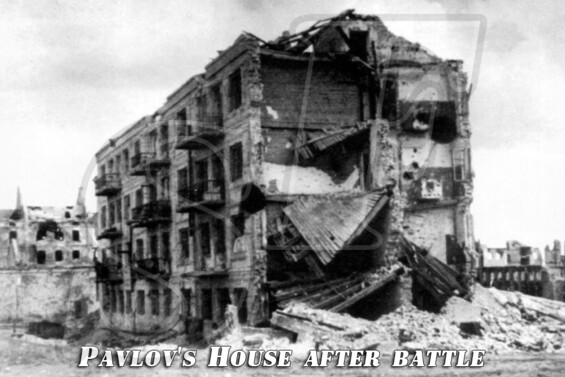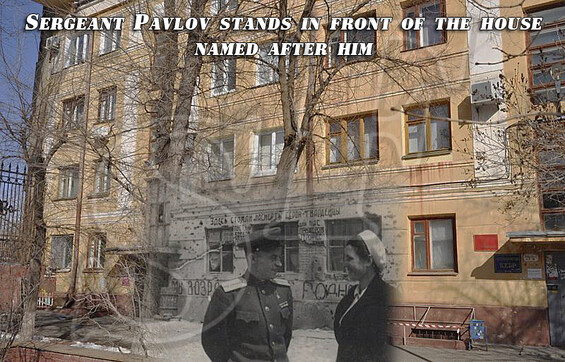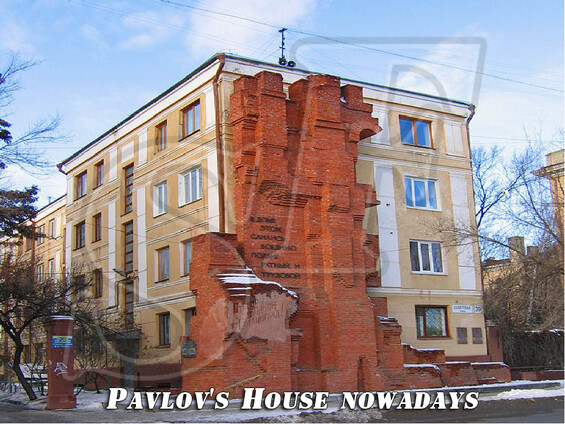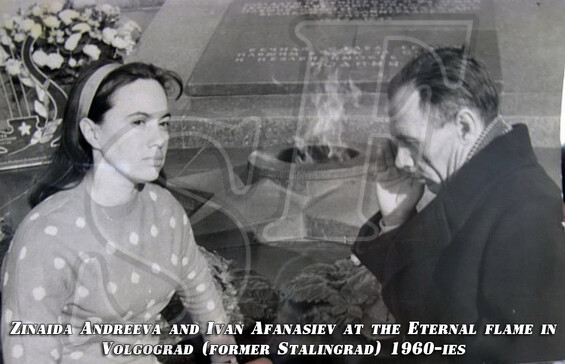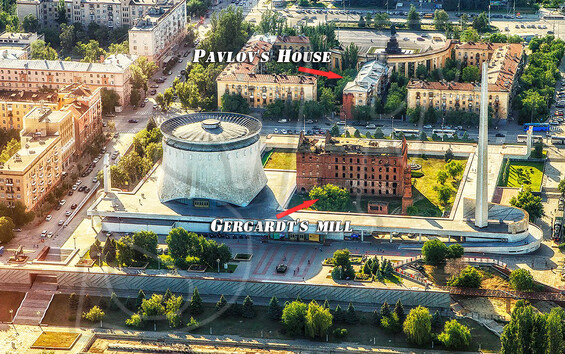All of France have been resisting Nazi Germany for 43 days, but in the end, surrendered anyway. Only one building in Stalingrad was holding down the fort for 58 days by 24 soldiers until reinforcements arrived ... The name of this building is Pavlov’s House.
Heroiс defense of Pavlov's House
In September 1942, several units of the 6th German Army approached the central part of the city, a few hundred meters away from the Volga River. On September 27th, a 30-person detachment of the Soviet Army was ordered to return a four-story apartment building with a good overview of a large area in the center of Stalingrad, that was seized by the Germans. Since the lieutenants and senior platoon sergeants had already either died or were injured, the 24 year-old junior sergeant Yakov Pavlov had to lead the fighters into battle. After a stiff battle, in which 26 of the 30 men in his platoon were killed, Pavlov and his three soldiers took control of the house and began to strengthen and establish defenses. This whole time, civilians were living in the basement of the house. Together with four soldiers of the Red Army, they kept the defense of Pavlov’s House for 3 days. Three days after another 24 Soviet soldiers led by Lieutenant Ivan Afanasyev, who officially took command, finally came to the rescue of the sergeant Pavlov's detachment. They brought the necessary provisions and weapons, including land mines, machine guns, and anti-tank rifles PTRD-41. Four layers of barbed wire and minefields were laid on the approaches to the house; heavy machine guns were positioned in the windows of the house overlooking the square; a telephone with the call sign “Mayak” (Lighthouse) was installed in the basement, and a trench was dug to communicate with the command that was at that time in the building of Gergardt's Mill.
From Pavlov’s House it was convenient to monitor and keep under fire the part of the city that was occupied by the enemy, within up to 1 km, and in some places even more. That is why the stiffest battles were unfolded for this house.
German infantry, supported by a tank platoon, was attacking the house every day, sometimes several times a day, trying to dislodge the enemy from their positions. Pavlov realized that if they let the tanks at a distance of 22 meters and then shoot from the roof with an anti-tank rifle, they can drill a hole in the upper roof armor in its thinnest place, and the tank will not be able to raise the gun high enough to shoot back. It is believed that during this siege, Pavlov destroyed almost a dozen tanks with his anti-tank rifle.
In the end, the bomb destroyed one of the walls of the house, but the Soviet soldiers continued to hold the Germans at bay. Each time, when the soldiers of Wehrmacht crossed the square and tried to surround them, Pavlov’s platoon brought down such a barrage of machine-gun fire, mortar shells and PTRD-41 caliber 14.5 mm rounds that the Germans had to retreat with serious losses.
By November, after numerous attacks, Pavlov and his fighters had to retire in between salvo fires and it is said that they raked the piles of German bodies so that they would not block their viewing.
All this time, a period of 58 days, from September 23rd to November 25th, 1942, while Pavlov’s House was holding up a defense, in the basement of the building were civilians who were not evacuated from Stalingrad. Both Lieutenant Afanasyev and Sergeant Pavlov were wounded but made it out alive. Sergeant Pavlov and his men have been holding the house for two months, until November 25th, 1942, when the Red Army launched a counterattack. The battle of Stalingrad lasted from July 1942 until February 1943, when surrounded German troops surrendered.
Pavlov's House nowadays
After the Battle of Stalingrad, it was inadvisable to restore the city from the ruins, but by Stalin’s order, it was nevertheless decided to rebuild the city. Perhaps because the city bore his name. Pavlov's house was completely restored and settled in 1943. Now it is a historical monument with international recognition. In 1985, a memorial wall was erected on the wall of the house, commemorating the heroism of Soviet soldiers. An obelisk with the image of a warrior-defender of the city of Stalingrad and a memorial plaque with the inscription of the names of the soldiers who protected this house were erected on the other wall of the house.
Interesting facts about Pavlov's House
- This is the first building that was restored in Stalingrad;
- During the defense of the house, there was a girl who was born in it. Her name is Zinaida Andreeva and she miraculously survived, largely due to the care given by the defenders of the house. Zinaida all her life considered all the defenders of the house where she was born her godfathers;
- Sergeant Pavlov led the defense of the house only for the first three days, then Lieutenant Ivan Afanasyev took over command. Therefore, it would be fairer to call this house “Afanasyev's House”, but on the Soviet maps the house was already called “Pavlov’s House” and its name remained unchanged.
- The number of defenders of Pavlov's House is not precisely established, the data varies from 24 to 31 people; - Loss of defenders of the house for all the time amounted to only 3 people;
- In March 2015, the last hero of this fortress house Kamolzhon Turgunov died in Uzbekistan;
- Many confuse Pavlov’s house with Gergardt’s mill. Here is the clarification. Gergardt's mill is located 100 meters perpendicular to Pavlov's house. This building was not restored after the war and it looks exactly the same as it had looked after the end of the Battle of Stalingrad. By the way, on the background of the mill, we often take photos of our German WW2 helmets, which you can see and buy by clicking on this link - WW2 helmets.;
- In the midst of the battle, both warring parties had problems with food supplies. In Gergardt's mill, Soviet soldiers and surviving civilians (perhaps also German soldiers) found the flour that had burned during the bombardment and used it for food;
- On the personal map of the commander of the 6th Army of Paulus, this house was marked as “Krepost'” (Fortress);
- German assault groups, according to the recollections of German military leaders, managed to break through to the first floor of Pavlov’s House several times, but they could never completely capture the building.

